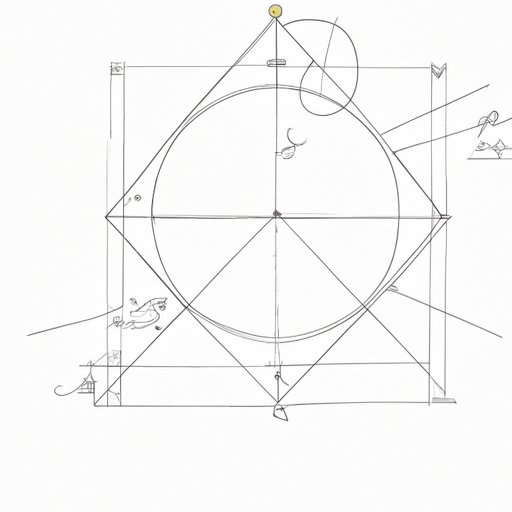Introduction
Geometry is an ancient branch of mathematics that deals with points, lines, angles, surfaces, and solids. It is a fundamental part of mathematics and is used in everyday life to solve problems. But when was geometry invented? This article explores the history of geometry, from its earliest beginnings in ancient Egypt to its development during antiquity in Greece.
A Historical Look at the Invention of Geometry
The origin of geometry is debated among historians, but most agree that it began in ancient Egypt. The ancient Egyptians were the first to make systematic use of geometry in their architecture and engineering projects. They used basic geometric principles to build pyramids, temples, and other structures. From here, the knowledge of geometry spread to other ancient civilizations, such as the Greeks and Babylonians.
Tracing Geometry’s Roots in Ancient Egypt
The earliest known use of geometry dates back to ancient Egypt. The Egyptians were great builders, and they developed a system of surveying to measure land for construction projects. They also used basic geometric principles in the design of monuments and temples. The Rhind Papyrus, which dates back to 1650 BC, contains some of the earliest examples of geometric calculations. It includes problems related to areas of triangles, circles, and rectangles.
The ancient Egyptians made significant contributions to geometry by developing methods for calculating the areas of shapes, solving linear equations, and constructing right angles. They also had a sophisticated understanding of three-dimensional geometry, which allowed them to construct pyramids and other large structures.

The Development of Geometry During Antiquity
The Greeks made major advances in geometry during antiquity. Thales of Miletus (624-547 BC) is credited with introducing the concept of deductive reasoning in geometry, which would form the basis of Euclidean geometry. Pythagoras (570-495 BC) is known for his work on the theorem that bears his name. He developed the idea of using numbers and ratios to describe geometric shapes.
Euclid (325-265 BC) is considered to be the father of geometry. His book, Elements, is one of the most influential works in the history of mathematics. It contains 13 books that cover topics such as plane geometry, solid geometry, number theory, and irrational numbers. Euclid’s work provided a foundation for the study of geometry that is still used today.
Conclusion
Geometry has been around for centuries, and its origins can be traced back to ancient Egypt and Greece. The ancient Egyptians were the first to make systematic use of geometry in their architecture and engineering projects. The Greeks made major advances in geometry during antiquity with the work of Thales, Pythagoras, and Euclid. Euclid’s book, Elements, is one of the most influential works in the history of mathematics and provided a foundation for the study of geometry that is still used today.
Geometry is an essential part of mathematics and is used in everyday life to solve problems. Its invention has had a profound impact on the development of science and technology, and it will continue to play a vital role in the future.
(Note: Is this article not meeting your expectations? Do you have knowledge or insights to share? Unlock new opportunities and expand your reach by joining our authors team. Click Registration to join us and share your expertise with our readers.)
